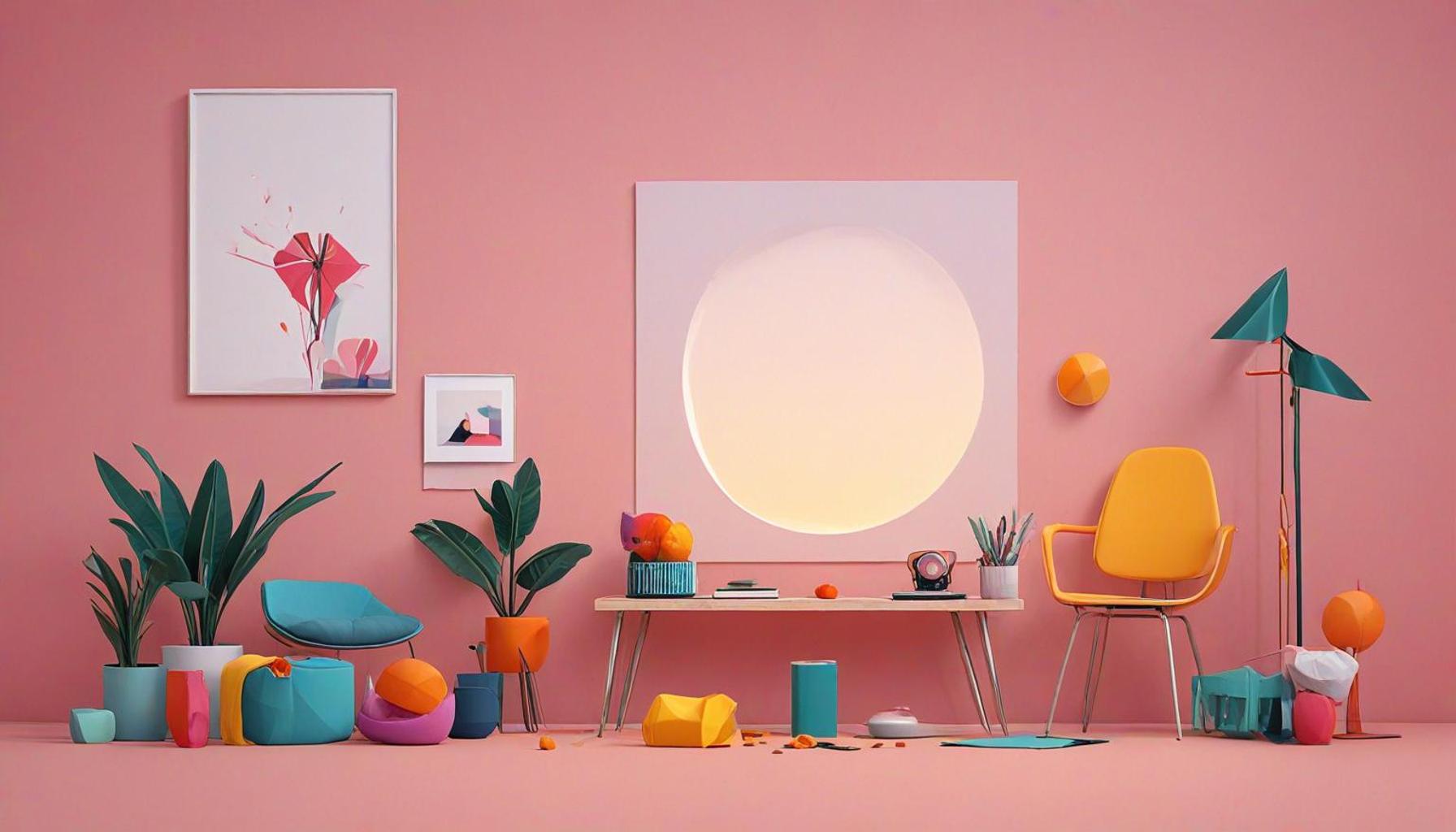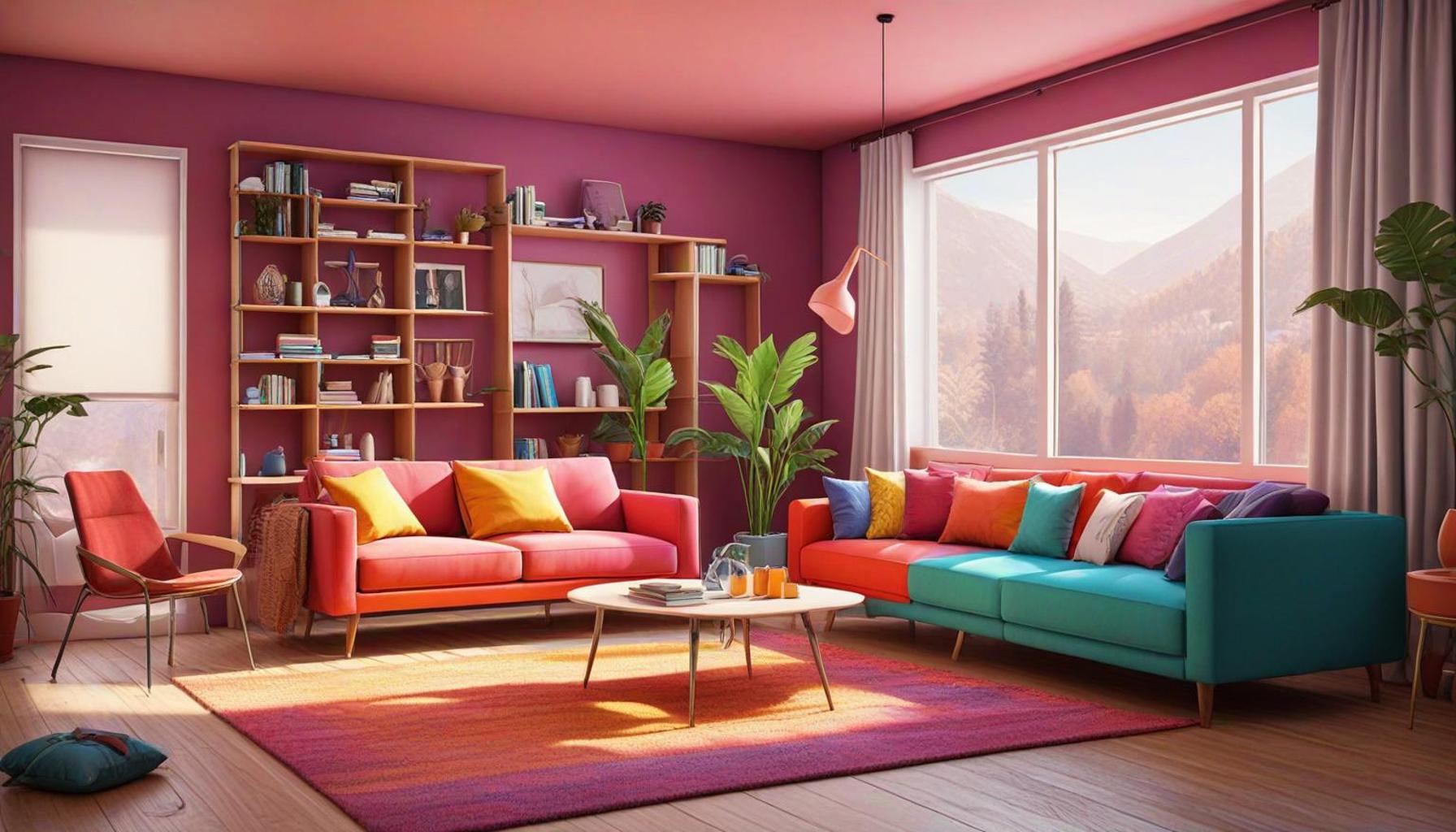Intentional Design and Minimalism: Strategies to Simplify Daily Life

Redefining Spaces, Reshaping Lives
In a world where distractions are abundant, intentional design and minimalism offer a breath of fresh air. These concepts not only streamline environments but also illuminate pathways towards a more focused and fulfilling life. The overarching goal is simple yet profound: to reclaim your time and mental space by focusing on what truly matters. With the increasing pace of modern life in the United States, these philosophies are rapidly gaining traction as a means to cultivate peace and productivity.
Embracing minimalism can lead to significant changes in various facets of life. Here are a few strategies to consider:
- Declutter Regularly: Make it a habit to remove items that no longer serve your goals. For instance, semi-annual decluttering can become a ritual; assess your belongings by asking whether they contribute to your happiness or functionality. Donating gently used clothing or repurposing furniture can not only clear space but also benefit others.
- Mindful Consumption: Carefully assess your purchases to ensure they align with your vision. This means taking time to evaluate whether an item is a need or a want. The “30-day rule” can be effective: if you’re contemplating a significant purchase, wait a month before buying it. This helps prevent impulsive buying and promotes thoughtful decision-making.
- Design with Purpose: Every item in your space should have a functional or emotional significance. This can range from selecting multipurpose furniture that enhances space efficiency to incorporating unique art pieces that evoke positive memories. Carefully curated spaces not only look better but feel more inviting and less chaotic.
This journey of simplification extends beyond physical spaces; it can also enhance various aspects of daily life, including your workspace and relationships. By prioritizing intentional choices, you pave the way for clarity and peace. For example, creating a distraction-free work environment can boost your productivity, allowing for deeper focus on tasks that drive your career forward.
As we delve deeper into the intricacies of intentional design and minimalism, consider how these strategies can help foster a sense of balance in your life. Living intentionally, whether it’s through open floor plans that invite light into your home or cutting down on social media usage, can lead to a more fulfilling existence. Are you ready to explore new horizons and redefine your daily life with these insightful principles?
DISCOVER MORE: Click here to enhance your efficiency!
Designing for Serenity: Transforming Everyday Experiences
In our quest for a simpler life, intentional design and minimalism provide essential frameworks that extend far beyond mere aesthetics. They act as a powerful counterbalance to the overwhelming noise of contemporary living, promoting an environment where clarity and purpose prevail. Understanding how these principles apply to every aspect of our daily lives can lead to profound transformations.
One of the first key areas to explore is the concept of functional design. When we intentionally design our spaces—whether at home or in the office—we lean toward function over clutter. This does not mean stripping away the character or warmth from our environments; instead, it emphasizes the importance of selecting items that enhance rather than detract from our lives. For example, consider a workspace cluttered with gadgets and paperwork. By streamlining this space to only include essential tools—like a single high-quality notebook and a computer with designated apps for productivity—you create clarity that fosters creativity and focus.
Incorporating natural elements into your spaces is another technique powerful enough to invigorate your daily routine. Research suggests that exposure to nature, even in small doses, can significantly reduce stress and enhance our moods. By including plants, natural light, or even just artwork depicting serene landscapes within your home or workplace, you create an atmosphere that promotes positivity and well-being.
When we talk about simplifying life through intentional design, we cannot overlook the significance of rituals and routines. Implementing daily practices that revolve around the principles of minimalism helps weave a fabric of simplicity into our lives. Whether it’s having a set time for morning clarity, such as meditation, or designating specific days for meal prep, routines can help minimize mental load and improve efficiency. By knowingly integrating these simplifications, we can gain control over time that would otherwise slip through our fingers.
Effective Strategies to Embrace Minimalism
To effectively embrace minimalism in your daily life, consider the following strategies:
- Create a Capsule Wardrobe: Streamlining your wardrobe to include versatile pieces that reflect your personal style can simplify daily outfit decisions, saving both time and cognitive resources.
- Set Boundaries with Technology: Limit your screen time on devices and select particular hours to check emails and social media. This conscious choice minimizes distractions and enhances focus.
- Curate Experiences Over Possessions: Invest in activities like travel or learning a new skill rather than accumulating more belongings. Experiences often lead to greater happiness and fulfillment than material items.
As you engage with these techniques, remember that the journey towards simplifying your life through intentional design is unique to you. Each small step contributes to a larger transformation, ultimately creating a lifestyle that resonates with your true essence. By examining every choice—be it in decor, routines, or consumption—we begin to untangle the knots of complexity that hinder our clarity and peace.
| Advantage | Description |
|---|---|
| Enhanced Focus | With minimal distractions, intentional design fosters a clearer mindset, leading to improved productivity. |
| Improved Well-being | Simplifying life through minimalism can reduce stress, giving way to a more fulfilling existence. |
The advantages of intentional design and minimalism extend far beyond aesthetics. For many, adopting these strategies results in enhanced focus and improved well-being. The premise is clear: reducing clutter — whether physical, digital, or mental — creates an environment conducive to productivity and tranquility. Individuals often find that less really is more; as they pare down their possessions and commitments, they reclaim both time and space. Incorporating intentional design into daily routines helps streamline tasks, making decision fatigue a thing of the past. Embracing a minimalist approach allows for greater clarity in thoughts and actions, which can be pivotal in personal and professional realms. Moreover, an intentional mindset promotes mindfulness, encouraging individuals to appreciate the here and now rather than getting caught up in excessive consumerism or endless to-do lists. The potential benefits of – what some consider a radical shift – are worth exploring further for those seeking tranquility amid modern life’s chaos.
DISCOVER MORE: Click here to learn about the art of letting go
Mindful Consumption: Shaping Habits for a Simpler Lifestyle
As we delve deeper into the practice of intentional design and minimalism, it’s essential to re-evaluate our consumption habits. This involves being mindful of what we bring into our lives—whether it be material possessions or digital clutter. The act of consuming should be deliberate and purposeful, leading us to make choices that truly align with our values and goals.
One approach to fostering mindful consumption is the one-in-one-out rule. This simple strategy dictates that for every new item you acquire, you should remove one from your space. This practice not only curtails accumulation but also encourages thoughtful consideration before purchasing. By asking yourself whether a new item is genuinely needed or just a fleeting desire, you can guard against the impulse to clutter your life with non-essentials. This method has gained traction in various circles as a practical step towards minimalism, making it one of the easiest ways to embrace an intentional lifestyle.
Adopting the Digital Declutter Approach
In an increasingly digital world, digital minimalism has emerged as a vital pillar of simplification. Our devices and online lives can become breeding grounds for distraction and overwhelm. Consider organizing your digital space by regularly assessing your applications, files, and emails. Aim to eliminate unnecessary apps that no longer serve a purpose and unsubscribe from emails that clutter your inbox. Tools like digital decluttering services can assist in restoring order and help you maintain a focused digital environment.
Moreover, you can establish a framework for controlling your online interactions. Setting specific times for checking emails and social media not only limits procrastination but also ensures you are engaging with digital platforms intentionally. Adopting a more thoughtful approach to technology may very well serve as the antidote to the chaos often found in our daily routines.
Fostering a Mindset of Gratitude
The journey towards minimalism is not merely a physical transformation but also a profound mental shift. Practicing gratitude for what you already possess cultivates a richer sense of fulfillment and contentment. Keeping a gratitude journal is a simple yet powerful method to help focus on the positives, thereby diminishing the longing for more possessions. Studies have shown that those who regularly practice gratitude report higher levels of well-being and lower instances of envy and resentment.
This mindset can lead to a more profound appreciation for experiences rather than material items. Engage in regular rituals that prompt reflection on what you cherish—whether it’s a walk in nature, time spent with family, or simply enjoying a good book. Integrating these experiences into your life can shift the focus from acquisition to appreciation, which fundamentally changes your relationship with consumption.
The Impact of Community
Finally, the concept of community plays a vital role in minimizing and simplifying life. Surrounding oneself with like-minded individuals fosters an environment conducive to shared values and intent. Participate in community exchanges, such as clothing swaps or potlucks, that emphasize resource sharing rather than accumulation. These activities not only strengthen social connections but also present practical avenues to scale down on material ownership while still enjoying life’s offerings.
Intentional design and minimalism offer us not just a way to clear our spaces but a route to clarity in our lives. By reshaping our habits around consumption, embracing digital decluttering, practicing gratitude, and engaging with community, we pave the way for a more serene existence. Each step taken not only simplifies daily routines but also nurtures a deeper connection to what truly matters.
DISCOVER MORE: Click here for tips on boosting your efficiency
Embracing a Simpler Life: The Path Forward
In conclusion, the journey toward intentional design and minimalism is a transformative process that can significantly simplify our daily lives. By consciously evaluating our consumption patterns, minimizing both physical and digital clutter, cultivating a gratitude mindset, and engaging with our community, we can create a lifestyle that emphasizes clarity and purpose. Each strategy discussed—whether it’s employing the one-in-one-out rule or embracing digital minimalism—not only reduces the incessant demands on our time and resources but also fosters a deeper, more meaningful connection to our environment and relationships.
This holistic approach promotes well-being and encourages us to focus on what truly enriches our lives, as opposed to what merely occupies our space. In a society often overwhelmed by excess, choosing to live intentionally allows us to reclaim our time and prioritize experiences over possessions. As we move forward, consider embracing these strategies not as strict rules, but as guiding principles to help navigate the complexities of modern life.
Ultimately, adopting an intentional design mindset can be a pathway to living more simply and meaningfully. With every small change, we can contribute to a more balanced existence, cultivating environments that reflect our values and aspirations. The time to start this rewarding journey is now—make the conscious choice to simplify, and discover the profound impacts it can have on your life.


